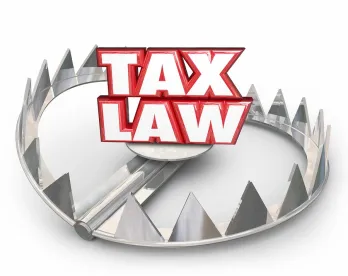This is the third installment of Bracewell Tax Report articles describing the new rules applicable to partnership audits under the Internal Revenue Code and the related proposed and final Treasury regulations. Each installment focuses on certain aspects of these rules and the practical implications to partners and partnerships, particularly as they relate to negotiating and drafting partnership agreements.
On November 2, 2015, President Obama signed into law the Bipartisan Budget Act of 2015, which included a new federal audit regime for partnerships and entities classified as partnerships for tax purposes (the New Rules). The New Rules, effective for audits of partnership tax years beginning on or after January 1, 2018, generally allow the IRS to adjust items of income, gain, loss, deduction or credit of a partnership, and collect any resulting underpayment of tax, at the partnership level. Click here for a general description of the New Rules.
The New Rules include a special election (the Push-Out Election) that permits the partnership to cause the audit adjustments to be allocated to the partners in the year subject to audit (the Reviewed Year) as an alternative to the partners in the year the audit concludes (the Adjustment Year) bearing the resulting assessment. The Push-Out Election must be made separately for each imputed underpayment of a partnership and, to be valid, must be made no later than 45 days after the IRS mails the notice of final audit adjustments to the partnership. If a Push-Out Election is made, an additional interest charge of 200 basis points will apply to the underpayment amount. That is, the underpayment rate is increased from the applicable federal rate, plus 3 percent, to the applicable federal rate, plus 5 percent.
When the New Rules were enacted, commentators cheered the inclusion of the Push-Out Election, which would effectively free an audited partnership of entity-level liability in the event of an imputed underpayment, as a taxpayer-friendly feature of an otherwise IRS-favorable regime. Despite the additional interest charge, it was expected that most audited partnerships would utilize the Push-Out Election as a way to avoid exposing their Adjustment Year partners to the economic burden of audit adjustments for the Reviewed Year, particularly when the partner population is not identical to that of the Reviewed Year. Commentators’ initial excitement quickly dissipated, however, when they realized the New Rules were short on details concerning the practical application of the Push-Out Election. Most importantly, the New Rules did not specify whether a first-tier Reviewed Year partner that was, itself, a partnership or other pass-through entity (a Pass-Through Partner), would be required to pay its share of the audited partnership’s adjustments directly or, in the alternative, would be able to make its own Push-Out Election, which could then be repeated through multiple tiers of Pass-Through Partners. If direct and indirect Pass-Through Partners were not permitted to make the Push-Out Election, the election would provide more limited benefit in the context of complex, multi-tiered pass-through structures where the Push-Out Election would not be available beyond the direct partners of the audited partnership. In particular, the potential inability to make Push-Out Elections through multiple tiers of partnerships was a concern of businesses held through complex pass-through structures under common control, for instance, in the private equity, hedge fund and real estate industries, where the optimal result would be a push out of the audit adjustments to the ultimate beneficial owners.
Many of these issues were addressed by the proposed regulations issued by the Treasury Department and the IRS on December 15, 2017, that permit a direct or indirect Pass-Through Partner of an audited partnership to push out adjustments to its own partners. Any direct or indirect Pass-Through Partner that declines to make the Push-Out Election must pay the underpayment liability or pursue modifications that are otherwise available under the New Rules, including modification by amendment of Reviewed Year partners’ tax returns.
Push-Out Elections, however, come with an administrative cost. Any partnership that makes a Push-Out Election must send a statement to each of the Reviewed Year partners, with a copy to the IRS, including each partner’s share of the audit adjustments. These statements must be circulated to the partners, and filed with the IRS, on or prior to the extended due date for the partnership’s tax return for the Adjustment Year. This deadline may be difficult to meet for audited partnerships with multi-tiered pass-through structures that wish to push out audit adjustments to their ultimate beneficial owners, because making the Push-Out Election through each intervening partnership would require the distribution of such statements in a potentially short period of time.
Many partnership agreements require that the partnership representative make the Push Out Election, without further consultation or consent by the partners, in every instance where the partnership has an imputed underpayment. Unlike the election to opt out of the New Rules (click here for a general description of the election to opt out of the New Rules), which should benefit most eligible partnerships, partnerships should be wary about adopting a “one size fits all” approach to the Push-Out Election. For example, in the case of an immaterial underpayment, the administrative burden of circulating and filing the required statements could outweigh any benefit of the election. Also, particularly in small partnerships not eligible for the opt-out election, the Reviewed Year partners and Adjustment Year partners could be the same, and the partners may prefer to satisfy the imputed underpayment by amending their Reviewed Year tax returns, by indemnifying the partnership for their respective shares of the imputed underpayment, or simply by causing the partnership to pay the underpayment liability, rather than taking on the administrative burden of the Push-Out Election and the additional interest charge. Finally, MLPs, with a large number of public unit holders, must consider whether the Push-Out Election ever would be practical, or even possible, to administer given the requirement to circulate statements to all Reviewed Year unit holders.
Our next installment will focus on the role and responsibilities of the partnership representative under the New Rules.




 />i
/>i

